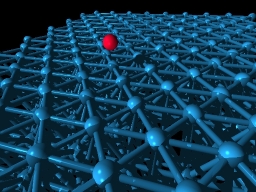Slow atomic particles interacting with metals
(either at surfaces or in bulk) are screened by the
medium electrons. The screening is provided by
a rearrangement of electronic charge in the vicinity
of the projectile. The polarization induced in
the metal by the particle strongly depends on the
particle charge state. In a typical interaction process,
the charge state of the moving particle varies
along its trajectory. Electron capture from the
target to the ion reduces the charge state of the
latter. One of such electron capture mechanisms is
the Auger process, in which an electron jumps
from the valence band of the metal to an ion
bound state. The energy released in such transition
is balanced by an electronic excitation in the medium.
We use density functional theory to describe the interaction
between atomic particles and free-electron-like metals, the latter
represented by a jellium model. We pay particular attention to
Auger processes and their charge transfer probabilities.
In recent years, a large amount of experimental work has
been devoted to study spin effects in the interaction of
low velocity spin-polarized He+ ions and He* metastable atoms.
We calculate the spin-polarization of electrons emitted in the
neutralization of He+ ions interacting with
metals. All stages of the emission process are included:
the spin-dependent perturbation induced by the projectile,
the excitation of electrons in Auger neutralization processes,
the creation of a cascade of secondaries,
and the escape of the electrons through the surface potential barrier.
The model allows us to explain in
quantitative terms the measured spin-polarization of the yield in the
interaction of spin-polarized He+ ions with
paramagnetic surfaces, and to disentangle the role played by each of
the involved mechanisms. We show that
electron-electron scattering processes at the surface
determine the spin-polarization of the total yield.
Additional efforts to calculate the energy loss of charged particles
penetrating metallic media have been made using time-dependent density functional theory.
A brief explanation can be found under the
'electron dynamics in metal nanoparticles'
link in the
'research'
section.
